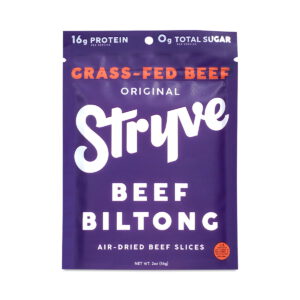- Healthy meal prep strategies
- Quick and nutritious snack ideas
- Smart grocery shopping tips
- Eating well on the go
- Balancing work and nutrition
- Staying motivated and accountable
When it comes to grocery shopping, making smart choices can save you time, money, and keep your meals healthy, especially for busy professionals juggling work and personal life. Here are some tips to enhance your grocery shopping experience — both online and in-store.
Start with a list: This critical first step can prevent impulse buys and help you stick to your budget. Organize your grocery list by category: produce, grains, proteins, and snacks. This way, you’ll navigate the store more efficiently, reducing time spent wandering the aisles.
Opt for whole foods: Whenever possible, choose fresh fruits, vegetables, whole grains, and lean proteins. They are generally healthier and can form the basis of nutritious meals. Include local foods in your diet to support local farmers and guarantee fresher options. Farmers’ markets or local co-ops often have great produce at competitive prices.
Consider vegan options: Incorporating plant-based foods can be a quick solution for healthy eating. Look for beans, lentils, nuts, and seeds, which are not only budget-friendly but also packed with nutrients. Many grocery stores now label vegan products clearly, helping you make decisions faster.
Organic vs. conventional: While organic foods can be pricier, they often contain fewer pesticides and chemicals. If you can’t afford every item to be organic, prioritize purchasing organic versions of the “Dirty Dozen,” which are the fruits and vegetables highest in pesticide residue. Refer to the Environmental Working Group’s Dirty Dozen list for guidance.
Bulk buying: This is an excellent strategy for items you use frequently. Grains, nuts, seeds, and legumes often come at a lower price when purchased in bulk and have long shelf lives. Just make sure you have storage that keeps them fresh.
Read labels carefully: Whether you are shopping online or in-store, nutrition labels provide valuable information regarding ingredients, allergens, and nutritional content. Keep an eye out for added sugars, unhealthy fats, and sodium levels. Avoid products with long ingredient lists filled with preservatives.
Online shopping safety: If you prefer online grocery shopping, check the site’s reviews and ratings. Use secure payment methods and ensure your personal information is protected. Many grocery delivery services allow you to see reviews of products—leverage this feature to choose the best options.
Be flexible: While sticking to your list is important, being open to substitute items can help you discover new healthy foods. If your favorite brand of quinoa is unavailable, try a different grain like farro or bulgur. This not only keeps your meals exciting but also maintains your healthy eating hacks routine.
By incorporating these practical grocery shopping strategies, you’ll ensure that you supply your kitchen with the necessary ingredients for a nutritious and fulfilling diet, even with a packed schedule.
Quick and nutritious snack ideas
Nutritional snacks are essential for busy professionals looking to maintain energy levels and focus throughout their hectic days. Quick solutions that provide nourishment can help stave off the mid-afternoon slump and keep you productive. Below are several ideas that combine convenience with health benefits.
One effective way to ensure you have healthy snacks on hand is to prepare them in advance. Set aside time at the beginning of the week to create snack packs. Portion-control containers can be your best friend in maintaining healthy eating habits. You can include snacks such as:
- Veggie Sticks with Hummus: Slice carrots, celery, and bell peppers, then pair them with a portable container of hummus for a crunchy, satisfying snack.
- Greek Yogurt Parfaits: Layer Greek yogurt with your choice of berries and a sprinkle of granola in a mason jar for a quick grab-and-go option that’s high in protein.
- Nut Butter Packets: Individual packets of almond or peanut butter can be paired with apple slices or whole grain crackers for a sweet and savory balance.
- Overnight Oats: Prepare individual servings of overnight oats with toppings like nuts, seeds, and honey, ensuring you have a wholesome snack rich in fiber.
- Homemade Trail Mix: Combine nuts, seeds, dried fruit, and dark chocolate pieces for a nutrient-dense snack that’s easy to toss in your bag.
To illustrate the range of snack options, the following table compares common snacks based on their nutrition profile:
| Snack | Calories | Protein (g) | Fiber (g) | Type |
|---|---|---|---|---|
| Veggie Sticks with Hummus | 150 | 5 | 4 | Savory |
| Greek Yogurt Parfait | 200 | 10 | 3 | Dairy |
| Nut Butter with Apple | 180 | 4 | 5 | Sweet/Savoury |
| Overnight Oats | 220 | 8 | 6 | Carbs |
| Homemade Trail Mix | 250 | 7 | 5 | Savory |
These quick snack ideas not only keep you satiated but also align with a balanced diet that busy professionals strive to maintain. When hunger strikes, having readily available, nutritious options can prevent reaching for unhealthy snacks high in sugar or processed ingredients.
In addition to these snacking ideas, consider incorporating flexibility into your choices based on what is seasonally available or on sale at the grocery store. This way, you can continually refresh your snacking routine without significant planning. Healthy eating hacks like these help sustain your energy and enhance your productivity, proving that busy professionals can indeed prioritize nutrition amidst a packed schedule.
Smart grocery shopping tips

When you’re out grocery shopping, having a few smart strategies up your sleeve can save you time and money while ensuring that your cart is filled with nutritious choices. Whether you’re shopping online or in-store, these savvy tips will help busy professionals maintain a balanced diet without the hassle.
Utilize online shopping tools: Many grocery websites offer features like shopping lists, saved favorite items, and personalized recommendations based on previous purchases. This can streamline your shopping experience, allowing you to quickly find what you need without navigating endless aisles. Look for stores that provide easy options for filtering by dietary preferences, such as organic or vegan, to simplify your decision-making process.
Seasonal shopping: Buying fruits and vegetables that are in season not only supports local agriculture but also results in fresher and more flavorful options. For instance, summer is the time for juicy tomatoes and sweet corn, while winter brings hearty squash and citrus fruits. Plan your menu around these seasonal items for a fresh take on your meals while keeping costs down.
Store brand savings: Don’t overlook store brands. These products are often just as quality-conscious as name brands but come at a lower price. Compare labels to ensure you are not sacrificing quality for cost. You may be pleasantly surprised by the delicious options you discover here.
Frozen fruits and vegetables: These often provide the same nutritional value as their fresh counterparts and can be a lifesaver for busy professionals. Frozen produce is picked at its peak ripeness and quickly frozen, locking in nutrients. Plus, they have a longer shelf life, reducing wastage. Throw a handful of frozen spinach into a smoothie or add frozen stir-fry veggies to a quick meal.
Healthy swaps: As you shop, look for healthier alternatives to your regular items. For example, try switching from regular pasta to whole grain or chickpea pasta, or opt for quinoa instead of white rice. Small changes like these not only enhance nutritional value but can also cater to various dietary needs.
Plan for leftovers: When grocery shopping, think about the meals you can prepare that will yield leftovers. Cooking larger portions of stir-fries, stews, or casseroles can provide you with lunch for the next day, minimizing time spent on meal prep throughout the week.
Check for coupons and promotions: Whether shopping online or at a local store, take the time to look for coupons or weekly ads. Many stores have loyalty programs that reward repeat customers with discounts and points that can be redeemed for future purchases. You can often find digital coupons directly on retailer websites or through dedicated apps, making it easier to save money without the need for clipping physical coupons.
Safe handling practices: Regardless of where you shop, keep food safety in mind. Store perishable items in your cart last to ensure they are kept cool, and check expiration dates before purchasing. When shopping online, consider delivery services that maintain temperature control throughout transit, and ensure that your groceries are delivered promptly to avoid spoilage.
Mind your portions: When buying snacks or bulk items, be mindful of portion sizes. Pre-portioning snacks into smaller bags can help you avoid mindless munching and keep your dietary goals on track. Items like nuts or trail mix, while healthy, can contribute unnecessary calories if not consumed in moderation.
Making informed choices while grocery shopping can significantly enhance your healthy eating hacks, allowing busy professionals to nourish their bodies efficiently. By implementing these strategies, you’ll ensure your pantry is stocked with wholesome, delicious ingredients that support your busy lifestyle.
Eating well on the go
Finding ways to maintain nutritious eating habits while on the move can be a challenge, especially for busy professionals with tight schedules. However, there are a variety of practical strategies to ensure that eating well doesn’t become a tedious task.
One effective approach is to embrace portable meals that you can easily consume on the go. Look for containers that are not only easy to pack but also designed to keep your food fresh. For instance, investing in insulated lunch bags or bento-style boxes can help maintain the temperatures of your meals, whether they are hot or cold. A well-packed meal could include grilled chicken, quinoa, and roasted vegetables, providing a balanced combination of protein, carbs, and healthy fats to fuel your day.
Additionally, consider crafting your own meal bars or protein balls. These snacks can be tailor-made to suit your tastes and nutritional needs, allowing you to control sugar and ingredient quality. Using oats, nut butter, and dried fruits, blend these ingredients, roll them into balls, and store them in the refrigerator. This quick solution not only keeps hunger at bay but provides sustained energy throughout the day.
Smoothies are also an excellent option for busy professionals. You can prepare smoothie bags in advance by portioning your favorite fruits, vegetables, and protein sources into zip-top bags. In the morning, simply grab a bag, add some liquid, and blend. This method saves time while ensuring you consume a healthy, nutrient-dense meal on the go. A green smoothie filled with spinach, banana, protein powder, and almond milk can be a refreshing option that is both quick and filling.
When dining out or grabbing meals on the move, it’s essential to make mindful choices. Look for restaurants or cafés that offer healthy options, such as salads, grain bowls, or wraps with lean proteins and plenty of vegetables. Don’t hesitate to customize your order; request dressing on the side, swap fries for a side salad, or choose whole grain bread over white. Being proactive about meal choices can significantly impact your nutrition without feeling deprived.
Involve emergency snacks in your strategy. Keeping quick, easy-to-carry snacks, like mixed nuts, dried fruits, or whole-grain crackers, can prevent you from reaching for less healthy options when hunger strikes. Having these items readily available ensures that you can satisfy your cravings without compromising your dietary goals, even during the busiest of days.
“Eating well should feel like a celebration of nourishment, not a burden.”
By applying these practical strategies, busy professionals can seamlessly incorporate healthy eating into their everyday routine, even when time is in short supply. Making intentional choices about meals and snacks helps maintain energy levels and focus, proving that it’s entirely feasible to nourish your body, even in the fast-paced world of work.
Balancing work and nutrition
 Balancing a busy work schedule with healthy eating can seem like an uphill battle, yet it’s entirely achievable with the right mindset and tools. It is important to remember that prioritizing your nutrition doesn’t have to take a backseat just because life gets hectic. Finding harmony between job demands and dietary needs requires careful planning and a dash of creativity. This approach doesn’t mean overhauling your entire routine but rather making mindful adjustments to integrate health into your daily life.
Balancing a busy work schedule with healthy eating can seem like an uphill battle, yet it’s entirely achievable with the right mindset and tools. It is important to remember that prioritizing your nutrition doesn’t have to take a backseat just because life gets hectic. Finding harmony between job demands and dietary needs requires careful planning and a dash of creativity. This approach doesn’t mean overhauling your entire routine but rather making mindful adjustments to integrate health into your daily life.
First, consider implementing a structured meal routine. Scheduling specific times for meals and snacks can help you cultivate a sense of regularity. This will not only improve your metabolism but also keep you from feeling overly hungry, which often leads to poor food choices later. By allocating time to prepare and enjoy your meals rather than rushing through them, you’ll be more mindful of what you’re eating, which can enhance your overall satisfaction and nutrition intake.
Utilizing meal prep can also support your busy lifestyle. Designate a few hours each week to cook meals in bulk, portion them out, and store them in the fridge or freezer. Choose portable and versatile dishes that can be enjoyed hot or cold, making them perfect for lunch at work or on the go. Options like whole grain pasta salads, stir-fries, or baked chicken with assorted vegetables are not only nutritious but also easy to reheat and pack for your busy days.
In addition to structured meals, don’t overlook the role of hydration in balancing work and nutrition. Keeping a reusable water bottle at your desk can serve as a visual reminder to drink regularly. Staying hydrated not only enhances your energy levels but also helps curb unnecessary snacking, which can often stem from confusion between hunger and thirst.
Another critical aspect is fostering a positive relationship with food. Busy professionals can sometimes fall into the trap of viewing meals strictly in terms of work efficiency—eating quickly, often in isolation. Try to infuse your meals with moments of enjoyment and relaxation. Eating with colleagues, if possible, or turning off your screen during meals can help you engage more fully, savor your food, and appreciate the time spent nourishing your body.
Lastly, consider the power of utilizing technology to keep you accountable. Many apps are designed to track your daily food intake, provide healthy recipes, or even remind you to eat. Engaging with these tools can enhance your awareness around food choices and help you remain motivated, ensuring that nutrition doesn’t take a backseat in your busy schedule.
- How can I maintain a healthy diet while working long hours?
- Meal prepping is an effective way to ensure you have nutritious options available throughout the week. Scheduling specific meal times and having healthy snacks on hand can also prevent unhealthy eating habits.
- What are some quick solutions for healthy meals on the go?
- Portable meal options such as whole grain wraps, salads, and smoothie packs can be prepared in advance. These meals are not only easy to grab but also wholesome and satisfying.
- How can I avoid unhealthy snacking during busy workdays?
- Keeping healthy snacks, such as fresh fruits, nuts, or vegetable sticks, readily available can help curb the temptation to reach for unhealthy options. Portioning snacks into individual servings can also prevent mindless munching.
- Are there benefits to eating with colleagues during lunch?
- Sharing meals with colleagues can foster relationships and support a positive workplace atmosphere. It also encourages mindfulness during eating, helping you enjoy your meal without distractions.
- What role does hydration play in maintaining my energy levels?
- Staying adequately hydrated is essential for energy and focus. Keeping a water bottle nearby serves as a reminder to drink regularly, which can help prevent fatigue and reduce unnecessary snacking.
- How often should I plan my meals and snacks?
- Planning your meals and snacks weekly can help you stay on track with your dietary goals. A structured routine can reduce last-minute food decisions that often lead to unhealthy choices.
- Can technology help me stay accountable with my nutrition?
- Yes, various apps can help you track your food intake and provide healthy recipes or reminders. Engaging with technology can enhance your awareness and motivation for maintaining a nutritious diet.
Staying motivated and accountable
Staying motivated while juggling work and nutrition requires practical and engaging grocery shopping techniques that help busy professionals remain accountable to their health goals. The first step is to treat your grocery shopping like a necessary ritual—an opportunity to recharge and invest in your health rather than just a mundane task. Setting out to shop with the right mindset can transform how you view your grocery trips.
Engage with your groceries: Make a habit of exploring the aisles of your local grocery store or farmers’ market with a sense of curiosity. Challenge yourself to discover new produce or healthy snacks that you haven’t tried before. For example, pick up a unique vegetable like kohlrabi or a different type of grain such as freekeh. This not only keeps meals exciting but also fosters a sense of adventure in your cooking.
Set specific goals: Before heading out, think about your health objectives for the week. Are you aiming to increase your vegetable intake? Perhaps you want to try a new plant-based recipe? Writing down these goals and bringing them with you can maintain your focus and help you select items that contribute to those objectives. Consider apps or tools that allow you to track your purchases and reinforce your targets as you shop.
Make it budget-friendly: Budgeting can sometimes feel restrictive, but viewing it as a game can change your perspective. Create a weekly budget for shopping that challenges you to find delicious, healthy options within those constraints. You might be surprised to find alternatives like canned beans or frozen berries that maintain high nutrition at a lower cost. Planning meals around store deals can help you stretch your budget while remaining accountable to eating well.
Involve the family: If you have kids or family members, include them in the shopping experience. Let them pick out fruits or vegetables they would like to try, or even assign them a small portion of the list to find. This can make grocery shopping a fun bonding activity instead of a chore, instilling healthy eating habits early on. Having their input can motivate everyone to enjoy meals together that cater to various tastes.
Utilize technology wisely: Grocery shopping apps can be your best friend. Many of these apps allow you to track sales, create lists, and compare nutrition information. Implementing a barcode scanner app can further simplify your shopping. You can check for vegan certifications, organic labels, or health ratings right at the store, ensuring you make the healthiest choices without second-guessing yourself.
Stay organized at home: Once you have completed your shopping, ensure your pantry and fridge are organized. Use clear storage containers for bulk items and label everything. This visual order not only helps you identify what you have on hand but also can inspire creativity during meal prep. Establish designated spaces for snacks, meal components, and quick solutions for those busy days, so you can easily grab what you need while remaining on track with your nutrition goals.
Check in with yourself: After your shopping trip, take a moment to reflect. Did you stick to your list? Were there impulse buys? Keeping a shopping journal can empower you to stay accountable and motivate you to improve during future excursions. Setting aside a few moments regularly to assess your choices can reinforce your commitment to maintaining a healthy diet.
By navigating grocery shopping with an empowered mindset and practical strategies, busy professionals can stay motivated and accountable while cultivating healthy eating habits that contribute to better overall well-being.
New Customers Offer!
Free Gift for the new customer
$24 Value, When You Subscrib Visit Thrive Market












